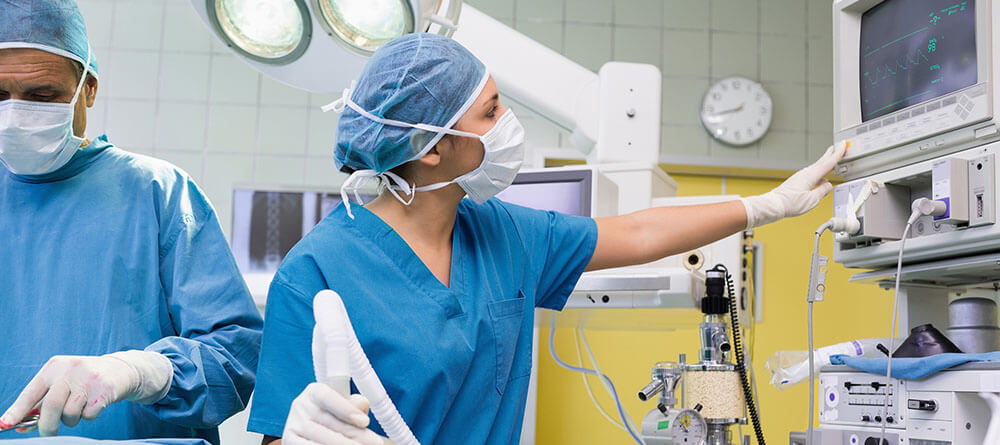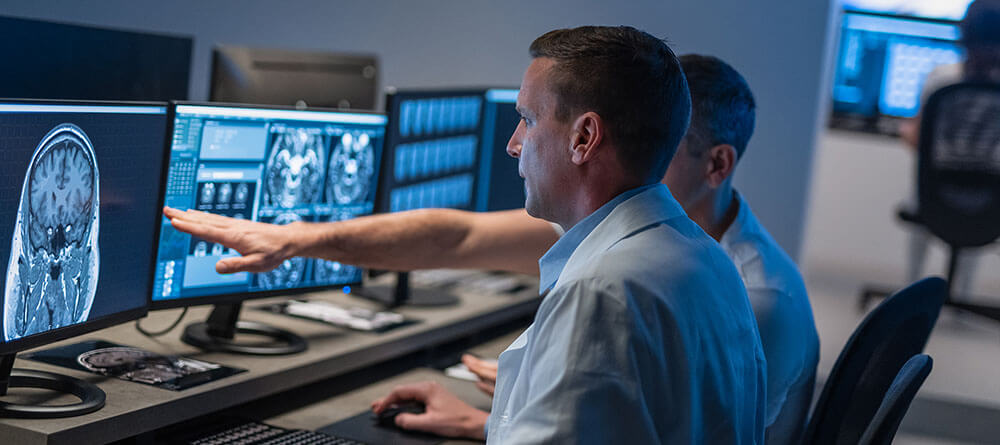As you work your way through medical school, you’ll want to start thinking about what type of medicine you feel most drawn to exploring as a physician. The sheer number of medical specialties can feel overwhelming—but by the time you reach the third year of your Doctor of Medicine (MD) program, you’ll need to have a pretty good idea of which types of residencies you want to apply for.
To help you narrow things down, we used data collected from the 2022 NRMP Main Residency Match Results to review the most popular types of residencies among medical school graduates today.
The top 10 medical residencies MD grads are pursuing
Once you graduate from medical school, you’ll have the opportunity to experience life as a medical resident doctor. This is where you’ll be immersed in fast-paced, hands-on training, working with actual patients under the supervision and guidance of a licensed physician.
You’ll want to be thoughtful about the areas of medical practice you’re interested in pursuing during residency, as the experience often serves as a launching point for young physicians’ careers. Explore the following types of medical residencies and see if you can find the right fit for you.
1. Internal medicine
Internal medicine specialists, also referred to as internists, are personal physicians who work in roles that revolve around the long-term health of patients. Internists are trained in the diagnosis and treatment of a variety of conditions, including cancers, infections, and diseases that can be found in children, adults, and the elderly.
In this type of residency, you’ll develop a deeper understanding of disease prevention, mental health and wellness, substance abuse, and common problems found in the eyes, ears, skin, nervous system, and reproductive organs. Sub-specialty options within internal medicine include adolescent medicine, adult congenital heart disease, and hematology.

2. Pediatrics
Pediatric residents focus on the medical science that surrounds the physical, emotional, and social well-being of children from birth to young adulthood. This involves preventative healthcare as well as the diagnosis and treatment of both acute and chronic diseases.
Pediatricians need to be mindful of the continuous and, in some cases, rapid changes that children experience throughout their development. Some sub-specialties for pediatricians include child abuse pediatrics, pediatric neurology, and pediatric cardiology.
3. Emergency medicine
In an emergency medicine residency, MDs focus on the immediate decisions made and actions taken that can prevent the death or further harm of a patient. Residents treat patients who are experiencing acute illness or injury and need immediate assistance as well as those who do not have a physician to follow them for their chronic diseases and come to the ED because they need prescriptions renewed or have no place else to turn to with a chronic malady. Quick and level-headed decision-making abilities are a must in emergency medicine.
Physicians within this type of medicine should be prepared to treat a diverse population of adults and pediatric patients, literally from birth to death. Sub-specialties within emergency medicine include emergency medical services, medical toxicology, ultrasound and pediatric or geriatric emergency medicine.
4. Family medicine
Medical students are looking to provide frontline healthcare to people of all ages, lifestyles, backgrounds, and conditions would do well in a family medicine residency. Physicians who specialize in family medicine help make high-quality, comprehensive, and continuous healthcare accessible for all patients.
Residents in this position may also provide referrals and coordinate care with other specialists. With that in mind, strong diagnostic instincts are critical. Sub-specialties within family medicine include adolescent medicine, geriatric medicine, pain medicine, and sports medicine.
5. Anesthesiology
Anesthesiologists are in charge of providing anesthesia to patients who are undergoing any type of surgical, obstetric, diagnostic, or therapeutic procedures. Throughout these medical procedures, resident physicians are tasked with monitoring the patient’s condition and ensuring their organs are functioning properly. An anesthesiologist’s duties can also include providing resuscitation and medical management for patients who have critical illnesses or severe injuries.
Sub-specialties for this type of residency include things like clinical informatics, neurocritical care, and pain medicine. Because anesthesiology requires a hefty amount of training, MDs can expect their first year of residency to serve as a clinical base year during which they’ll receive 12 months of broad clinical education. This is then followed by three years of hands-on anesthesiology training.

6. Psychiatry
Medical school grads who pursue a psychiatry residency can expect to be trained in the evaluation of mental, addictive, and emotional disorders. Examples of these include psychotic disorders, mood disorders, anxiety disorders, and many others.
The variety within the psychiatry specialty can be particularly broad. Potential focus areas for psychiatrists include addiction psychiatry, brain injury medicine, child and adolescent psychiatry, and forensic psychiatry.
7. Obstetrics-gynecology (OB/GYN)
This type of residency revolves around maintaining the health and well-being of women before, during, and after their childbearing years. Completing an OB/GYN residency will help solidify medical school graduates’ understanding of how to diagnose and treat conditions of the female reproductive system and associated disorders.
Sub-specialties within the OB/GYN sector of medicine include complex family planning, critical care medicine, and maternal–fetal medicine.
8. Surgery/general surgery
There a several types of surgeons and surgical residencies. General surgeons are skilled in the diagnosis and care of patients experiencing diseases and disorders that affect areas including the abdomen, endocrine system, and digestive tract. In a general surgery residency, you’ll complete a number of minimally invasive techniques and endoscopies to treat conditions like hernias, pancreatitis, and thyroid disorders.
Physicians who specialize in general surgery can expect to treat a wide range of patients, from those who are injured or critically ill to pediatric patients or even patients who have been diagnosed with cancer. Sub-specialties within general surgery include complex general surgical oncology, pediatric surgery, surgical critical care, and vascular surgery.

9. Diagnostic radiology
Diagnostic radiologists are typically hospital-based physicians who maintain an expertise in a number of different methods that allow them to diagnose diseases. With the continually evolving nature of diagnostic technologies, radiologists have been able to achieve an increasing number of interventional procedures. Sub-specialties within the diagnostic radiology field include abdominal imaging radiology, clinical informatics, and interventional radiology.
As with anesthesiology residencies, MDs who pursue a residency in diagnostic radiology can expect their first year of residency to include a broad range of preliminary training, followed by three years of hands-on practice.
10. Orthopedic surgery
Orthopedic surgeons are focused on the preservation, investigation, and restoration of the composition and function of a patient’s extremities, spine, and associated structures. They accomplish this with the use of medical, surgical, and physical tactics. Physicians in this area care for patients ranging from children to adults—anyone who may be experiencing musculoskeletal problems.
The most common musculoskeletal issues an orthopedic surgery resident will encounter in patients stem from physical trauma, infections, tumors, or degenerative diseases. Some sub-specialties within orthopedic surgery include adult reconstructive orthopedic surgery, orthopedic trauma, and musculoskeletal oncology.
Prepare for a successful medical residency
Now that you have a clearer picture of the most popular types of residencies medical school graduates are pursuing, you’re better equipped to make an informed decision regarding the right residency option for you. The next step is to ensure you’re qualified for the residency opportunities you’re seeking out.
Learn more about how you can prepare yourself by reviewing our article “How to Land the Medical Residency You Want: 7 Criteria You’ll be Evaluated On.”

